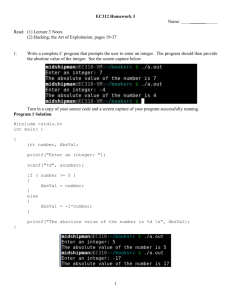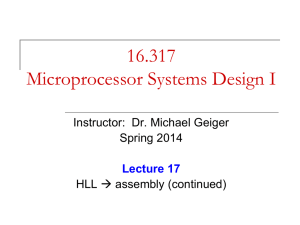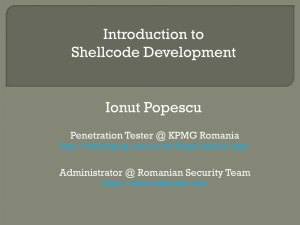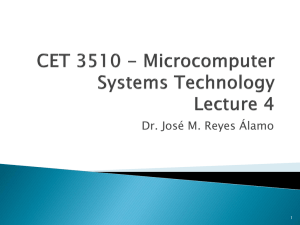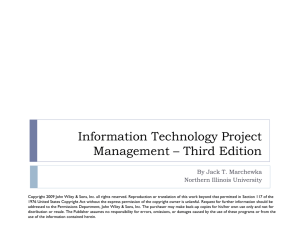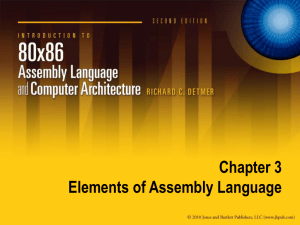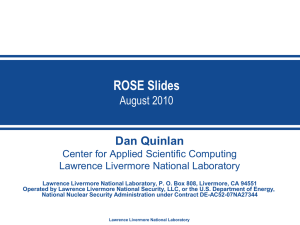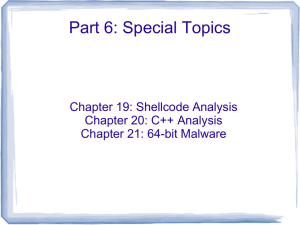Chun Feng
advertisement
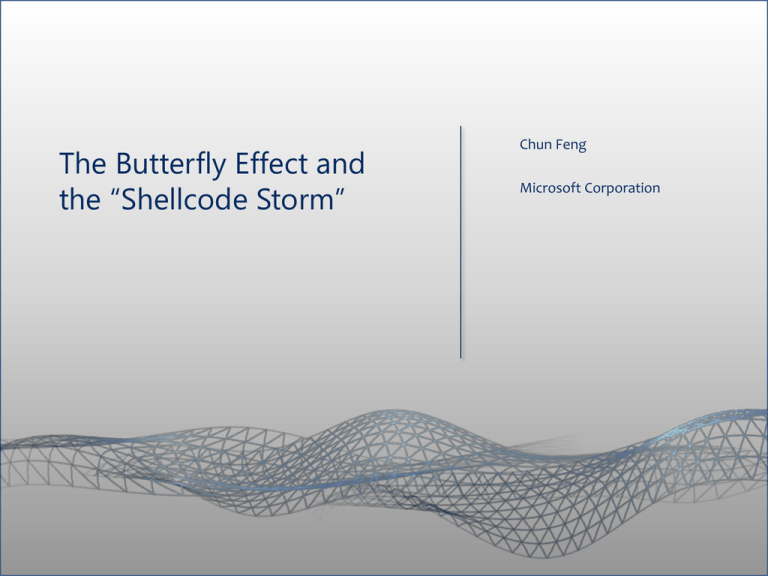
The Butterfly Effect and
the “Shellcode Storm”
Chun Feng
Microsoft Corporation
Tiny change
Large-scale alterations
•
•
•
•
CVE-2010-1297
CVE-2010-2884
CVE-2010-3654
CVE-2011-0609
Clean SWF file
1 byte change
Exploit
70
Number of Reported Adobe Flash Player Related
Vulnerabilities
60
60
50
42?
40
30
20
20
22
14
10
0
2008
2009
2010
2011
User
Developer
ActionScript3
AVM (ActionScript Virtual
Machine)
Compile
ByteCode
Verifier
MIR Code
Generator
MD Code
Generator
Native Code
(x86, PPC)
JIT Compile
ActionScript 3:
public function add8(a:int): int
{
return a+8;
}
MIR (intermediate machine
independent language):
@5
arg 0
@10
ldop 4(@5)
@22
def @10
@37
use @22 [1]
@38
imm 8
@42
add @37 @38
Adobe Byte Code (stack machine):
pushscope
getlocal_1
pushbyte 8
add
returnvalue
X86 native code:
mov
eax, 16(ebp)
mov
edx, 4(eax)
mov
-84(ebp), edx
mov
ecx, -84(ebp)
add
ecx, 8
mov
-76(ebp), ecx
mov
eax, -76(ebp)
Time: Early June, 2010
Adobe Flash player version <= 10.0.45.2
Adobe Reader version <= 9.3.2
Sample contains 0-day exploit hosted on a
webpage (malformed SWF + JavaScript heap
spray)
1 byte changed in function:
Public RadioButton.configUI ( ):void
4F D2 02 00 callpropvoid fl.controls:LabelButton.configUI, 0
40 D2 02
00
newfunction TextInput:drawBackground
• Pageguard exception
– Trouble with Ollydbg; use Windbg, type command “sxi
gp”
• 15 seconds timeout
– Less intrusive debugging - can’t use single step / trace!
• Understand JIT compiled code
1. How is the control transferred to shellcode?
2. The root cause of this vulnerability
1. Remove the JavaScript heap spray code to cause a
crash rather than have shellcode executed
2. Locate the instruction causing the crash
Problems:
•
•
May not be 100% accurate
Doesn’t work if the heap spray code is encrypted
Assumption: Transferred via call instruction
The return address for this call will be pushed onto the stack
463bd28d ff510c
463bd290 83c40c
call dword ptr [ecx+0Ch]
add esp,0Ch
;[4198000c]=0c050c05
Dump stack at the 1st instruction of shellcode (address 0c050c05)
463bd290
41980000
00000000
0013e364
At the 1st instruction of the shellcode, the return
address is at the top of the stack
Problems – we are unable stop there:
• The address of 1st instruction of the shellcode is
not predictable
• Single step doesn’t work (15 secs timeout)
or al, 5,
// …
or al, 5
or
; pseudo NOP start ESP = ESP0
; pseudo NOP end ESP = ESP0
al,00C; 1st instruction of shellcode ESP= ESP0
// ... more code (more bytes pushed onto the stack)
Call URLDownloadToFileA; ESP = ESP1
463bd270
mov
ecx,
dword ptr [ebx+34h] ; [431492b4]=4313e080
463bd276
mov
edx,dword ptr [ecx+8]; [4313e088]=42fb208a
463bd27b
mov
ecx,dword ptr [edx+284h]; [42fb230e]=41980000
463bd28d
call
dword ptr [ecx+0Ch]; [4198000c]=0c050c05
1. How is the control transferred to shellcode?
2. The root cause of this vulnerability
463bd270
mov
ecx,
dword ptr [ebx+34h] ; [431492b4]=4313e080
463bd276
mov
edx,dword ptr [ecx+8]; [4313e088]=42fb208a
463bd27b
mov
ecx,dword ptr [edx+284h]; [42fb230e]=41980000
463bd28d
call
dword ptr [ecx+0Ch]; [4198000c]=0c050c05
• No document for JIT compiler
• No PDB symbol file available
Revealed by http://jpauclair.net
Windows: C:\Documents and Settings\<username>\mm.cfg
AS3Verbose = 1
Details of JIT runtime trace:
C:\Documents and Settings\<username>\Application
Data\Macromedia\Flash Player\Logs\flashlog.txt
26:callpropvoid fl.controls:BaseButton::drawBackground 0
@63 ldop 16(@62)
@64 ldop 812(@63)
……
@63 ldop 16(@62)
060BD6E4 mov eax, 16(ebx)
active: eax(63-64) ebx(62-69) edi(2-142)
@64 ldop 812(@63)
060BD6E7 mov ecx, 812(eax)
active: ecx(64-70) ebx(62-69) edi(2-142)
Each JIT compiled function has three parameters:
func(MethodEnv*, int argc, uint32 *ap)
For example:
RadioButton.configUI ():void
•
argc = 0
•
ap[0] = RadioButton instance (“this” pointer)
protected function drawBackground():void
{
var bg:DisplayObject = background;
var styleName:String = (enabled) ? "upSkin" : "disabledSkin";
…
}
463bd270
mov
ecx, dword ptr [ebx+34h] ; [431492b4]=4313e080
463bd276
mov
edx,dword ptr [ecx+8]; [4313e088]=42fb208a
463bd27b
mov
ecx,dword ptr [edx+284h]; [42fb230e]=41980000
463bd28d
call
dword ptr [ecx+0Ch]; [4198000c]=0c050c05
The control transfer is in JIT compiled code for TextInput.drawBackground( )
TextInput.drawBackground(MethodEnv*, int argc, uint32 *ap)
463bd1bc
463bd1bd
463bd1bf
463bd1c5
463bd1c8
push
mov
sub
mov
mov
ebp
ebp,esp
esp,50h
eax,dword ptr [ebp+10h] ; [0013e290]=43169301
eax,dword ptr [eax]; [43169301] = ??? (Unaligned pointer)
In TextInput.as
TextInput.draw( ) calls TextInput.drawBackground( )
In JIT compiled code TextInput.draw( ):
463bcbdb 83c801
or eax,1
…
call TextInput.drawBackground( )
; make it unaligned!
; Overloaded !
After 1 byte change => newfunction TextInput.drawBackground
Internal representations
Lowest 3 bit used for type
0x43169301
Type: Object
Actual Value: 0x43169300
RadioButton.configUI( )
1 byte changed
TextInput.drawBackground ( ) func obj. created
TextInput.draw( ) emits the wrong code / parameter
when calling TextInput.drawBackground( ) (which has been “overloaded”)
TextInput.drawBackground( ) doesn’t handle it correctly
when “enabled” property is referenced
Invalid memory accessed, shellcode executed
1. How is the control transferred to shellcode?
2. The root cause of this vulnerability
Time: Early Nov 2010
Adobe Flash Player version <= 10.1.85.3
Adobe Reader version <=9.4
Sample containing 0-day exploit distributed as
a PDF file with a malformed SWF embedded
16
22(0x16)
RadioButtonGroup
0x07
0x02
0x07
07
// [[17]CONSTANT_QName
// NsIndex = 2(0x02)
// NameIndex = 7(0x07)
Button
MultiName constant pool: NameIndex changed
fl.controls.RadioButtonGroup -> fl.controls.Button
RadioButtonGroup.set_groupName -> Button.set_groupName
Invalid memory accessed, shellcode executed
Time: March 2011
Adobe Flash Player version <= 10.2.152.33
Adobe Reader version <= 10.0.1
Sample containing 0-day exploit distributed as
an Excel file with one SWF file embedded
Clean
4CC4 10 07 00 00
…
jump loc_4CCF
4CCF 80 2C
coerce
com.greensock.core.SimpleTimeline
Malicious
3EA1 10 29 00 00 jump loc_3ECE
….
3ECE 66 D6 02
getproperty
<namespace_set>.paused
Jump destination is changed!
Shellcode payload:
• Downloads an encrypted PE file
• Decrypts it (xor 0x95 skipping 0x00 and 0x95)
Decrypted PE file(Win32/Poison):
• Keylogger
• Backdoor:
Receives shellcode rather than command
Pros:
• Thin client – just executes whatever receives
• Easy to implement new command
• Payload code not written on disk
Cons:
• Coding complexity – coding in shellcode
• Platform dependent
Shellcode matryoshka
Shellcode decrypts PE file from PDF stream
Shellcode(in decrypted PE file) decrypts a DLL from
resource
Shellcode(in decrypted DLL) decrypts and loads a PE
file(Win32/Hupigon, aka Win32/Pigeon)
• Threats have been targeting Adobe flash player
since it is popular and platform-independent
• 1 byte change in SWF may cause significant
consequences. Attackers have been using
dummy fuzzing to find vulnerabilities
• The attacks on Adobe Flash Player are likely to
continue to be prevalent in the future
